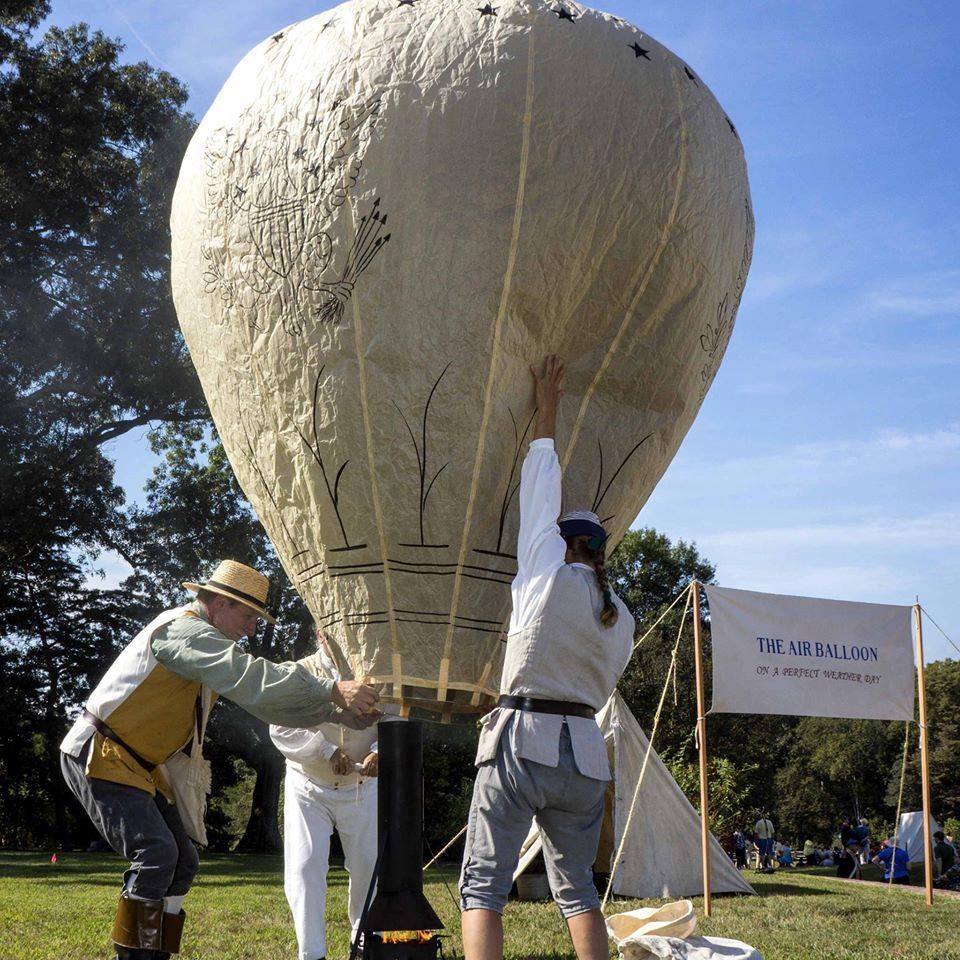Last updated: December 10, 2024
Article
Balloons Over Rendezvous

Photo courtesy of Jon Stealey
Who was Count Paolo Andreani?
Why was he in Grand Portage in 1791?
A wealthy Italian nobleman and one of the world’s first aeronauts, Count Paolo Andreani made the first balloon ascension in Italy in March, 1784. After witnessing the Gerli brothers launch an unmanned model balloon, the Count commissioned them to make one large enough for a man (75 feet in diameter). After 24 days, the balloon was complete, weighing in at 2900 pounds. Andreani and two assistants went up 4900 feet and traveled several miles.
In the 1790-91 period, Andreani turned to exploration and visited the Great Lakes region. According to Lord Selkirk of the Hudson’s Bay Company, he came to Grand Portage in a birchbark canoe obtained from Forsyth & Richardson, merchant with a North West Company (NWC) connection. With this he traveled Lake Superior. John Johnson, a NWC trader at LaPointe (Madeline Island), records meeting Andreani in September, 1791. Andreani was at LaPointe to take celestial observations from the island. More evidence that he may have been one of the first noted persons who circumnavigated Lake Superior is from the great mapmaker David Thompson, who recorded some of Andreani’s navigational measurements taken in the area of Thunder Bay, Ontario.
Assembled from different sources, a few words describe Andreani’s passing through the Grand Portage area, include:
the center of this trade... kept in good repair, garrisoned with fifty men... in this place frequently a concourse of one thousand people and upwards.
In Travels Through the United States of America, published in 1799, both Lord Selkirk and Duke de la Rochefoucauld Liancourt mention Count Paolo Andreani. Liancourt claims to excerpt from Andreani’s journal*, relaying that several thousand Native people took their furs to the Great Carrying Place for trade.
*Either the journal no longer exists or it has not yet been found.
They listed goods in trade as follows: “woolen blankets, coarse cloth, thread and worsted ribbons of different colors, vermillion, porcelain bracelets, silver trinkets, firelocks or flintlock guns, shot, gunpowder, and, especially, rum.” These were marked at eight times the Montreal price and traders fixed the prices in the interior “at their will or pleasure.” The employees were paid in merchandise with open credit against the following year’s trapping.Andreani expressed his love of travel in a 1791 letter to his brother Gian Mario in Milan:
Dearest Brother... the purpose in crossing the ocean was not to visit cities... but rather to immerse myself in unknown places
He became a student of North America and the Great Lakes, describing customs and activities of all the tribes he encountered. He sketched one of the first detailed examples of a lacross stick in his diary and produced an Italian-Iriquois (Oneida, Onodaga, and Seneca) dictionary. Here in Minnesota, he identified upper sources of the Mississippi River.
Paolo Andreani returned to North America between 1806 and 1812. By then, the once wealthy Count had accumulated heavy debts. Andreani sold many of his scientific instruments and collections from his visits. He left his native Italy and his unpaid debts and exiled in France, where he died in 1823.
Paolo Andreani was a unique and strange visitor to this special place – an early visitor who helped teach us more of the past here at the Great Carrying Place.
